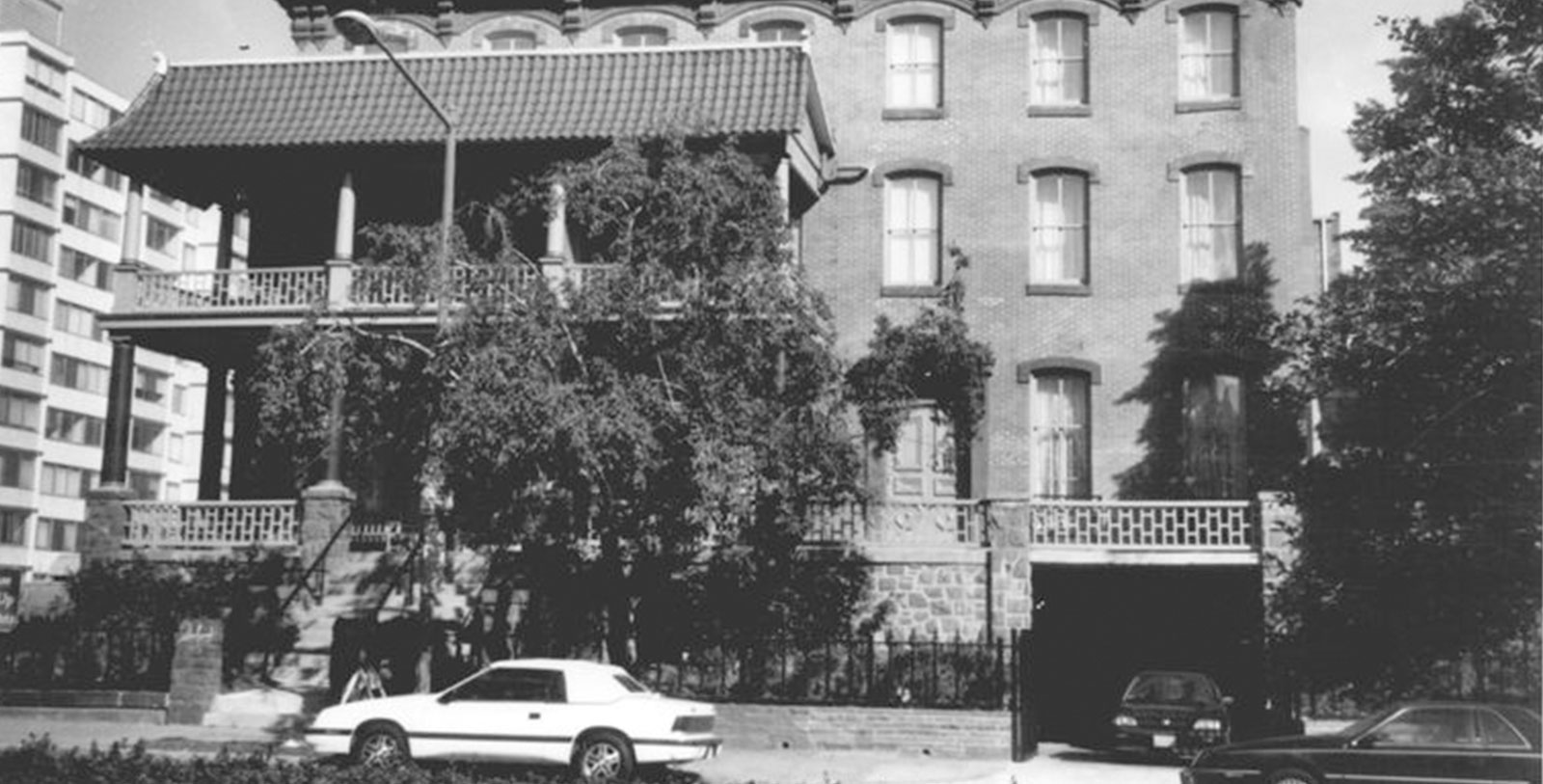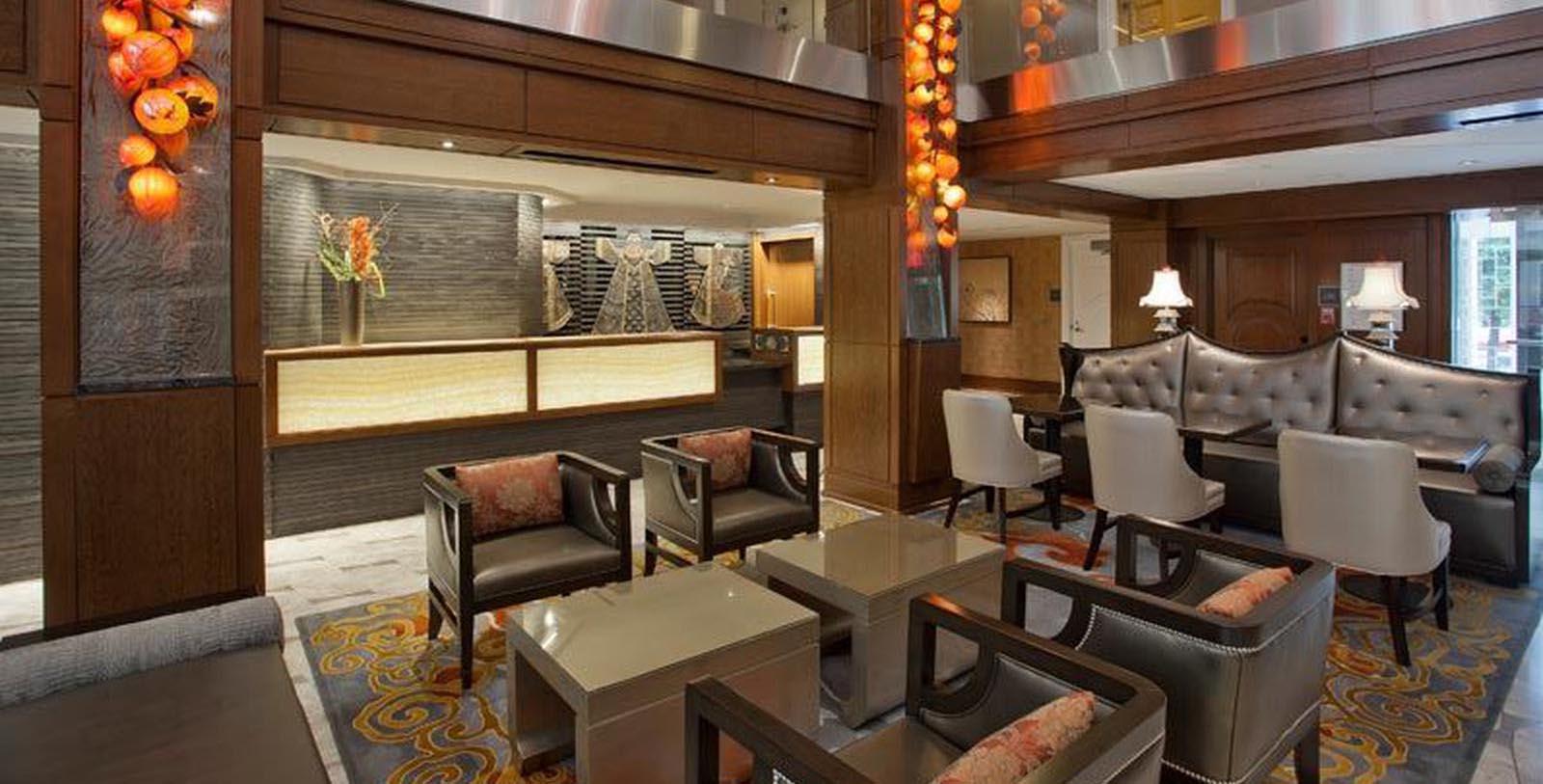Receive for Free - Discover & Explore eNewsletter monthly with advance notice of special offers, packages, and insider savings from 10% - 30% off Best Available Rates at selected hotels.
morrison-clark inn history
Discover the Morrison-Clark Inn, which once offered lodging for servicemen when it functioned as the Soliders, Sailors, Marines and Airmen's Club in the 1920s.
The Morrison-Clark Inn, a charter member of Historic Hotels of America since 1989, dates back 1864.
VIEW TIMELINEA charter member of Historic Hotels of America, The Morrison-Clark Inn is located in downtown Washington, D.C., residing specifically within its Mount Vernon Square neighborhood. The historic hotel actually consists of several structures: the Morrison House, the Clark House, and the Chinese Community Church (and Parsonage). Both the Morrison House and the Clark House constitute the original component of the hotel, while the Chinese Community Church was a later addition included during a renovation that transpired in the 21st century. The Morrison and Clark homes date to the mid-19th century, which functioned as the private residences for David L. Morrison and Rueben B. Clark, respectively. Each man had become incredibly wealthy, with their residences built to reflect that opulence. (Morrison had specifically emerged as a prominent wholesaler and real estate developer, while Clark operated a successful grocery store among other endeavors.) Both houses were initially identical, displaying a gorgeous array of beautiful Italianate-style architecture. However, Morrison eventually changed the footprint of his home in 1876, installing additional rooms and increasing its size in general.
But by the end of the century, the two structures had fallen under the ownership of different people. While Clark’s daughter, Ida, would inherit his home, Morrison would subsequently leave his house to Marie E. Byington. Both buildings experienced several changes afterward, with the erstwhile Morrison residence in particular seeing its Chinese-inspired mansard roof debut. In 1923, the Morrison House was then obtained by The Women’s Army and Navy League, whose members converted it to serve as the headquarters for the “Soldiers, Sailors, Marines, and Airmen’s Club.” (The inclusion of “Airmen” transpired many decades later, though.) The Clark House eventually joined the Morrison House in 1930, at which point the League combined the two to form one exclusive clubhouse. The recently unified structures went on to function as a primary meeting place for The Women’s Army and Navy League over the next few years, hosting a variety of fundraisers and galas. Many prominent socialites were seen spending time at the location, too, including First Ladies like Grace Coolidge, Mamie Eisenhower, and Jacqueline Kennedy. In fact, guests spotted Grace Coolidge at the head of the reception line when The Women’s Army and Navy League held its opening ceremony at the Morrison House.
The League decided to vacate the premises during the late 1980s, and sold selling its rights to the site. The new proprietors then spearheaded a massive renovation that transformed the former clubhouse into a wonderful boutique hotel known as “The Morrison-Clark Inn.” Architect William Adair oversaw the project, brilliantly ensuring that the rich architecture of both buildings endured for future generations to appreciate. The Morrison-Clark Inn quickly became one of the city’s best holiday destinations, with hundreds of guests visiting its distinctive guestrooms every year. Business had become so profitable that the owners commissioned yet another renovation as a means of accommodating its eager clientele. The work ultimately concluded in 2013, which greatly expanded the size of The Morrison-Clark Inn. Perhaps the most significant component to the construction was the incorporation of the neighboring Chinese Community Church into the overall floorplan. The church itself resided within a historic structure that first opened amid the Great Depression. Although it had stopped functioning as a church for some time, the building nonetheless possessed its own unique architectural traits that complimented the Asian design motifs of the Morrison House. The Morrison-Clark Inn remains one of Washington’s best places to stay, as well as one of the finest members of Historic Hotels of America. (The Morrison-Clark Inn is also listed in the U.S. National Register of Historic Places.)
-
About the Location +
Washington is among the nation’s most historic cities, having been founded more than two centuries ago by the Founding Fathers. In 1790, Congress specifically passed the “Resident Act” after James Madison, Thomas Jefferson, and Alexander Hamilton agreed to create a permanent national capital in the southern United States. Known as the “Compromise of 1790,” the men decided to place the future settlement somewhere in the South in exchange for the federal government paying off each state’s debt accrued via the American Revolutionary War. George Washington—who was serving his first term as President—then carefully looked for the site of the new city in his role as the country’s chief executive. He spent weeks searching for the perfect spot before finally settling upon a plot of land near the mouth of the Potomac River. Washington had felt that the location was in a terrific spot, for it was still roughly in the middle of the nation. Furthermore, he hoped its proximity near major seaports would further bind the emerging western states with the more established Atlantic coastline. Maryland and Virginia subsequently donated around 100 acres at Washington’s site, although Virginia would later rescind its donation in 1847.
Nevertheless, work on the capital began a year later and lasted for the duration of the decade. At the start of the project, the three federal commissioners in charge of supervising its progress decided to name the nascent settlement after the President himself. (They also named the federal district surrounding the city as “Columbia,” a feminine adaptation of Christopher Columbus’ name.) Noted French architect Charles L’Enfant spearheaded the city’s new design, who presented a bold vision that featured wide boulevards and ceremonial spaces reminiscent of his native Paris. But despite L’Enfant’s grand plans for Washington, only the first iterations of the United States Capitol, the White House, and a couple other prominent governmental structures appeared at the time. Barely any other buildings stood in the city when the entire federal apparatus relocated from Philadelphia to Washington in 1800. Life in early Washington was hard, too, for its residents were constantly beset by disease, poor infrastructure, and local economic depressions. What few residents remained in the city year-round endured the worse hardships during the War of 1812, when the British notoriously ransacked the community. In fact, the British had even torched the Capitol, the Treasury, and the White House.
Washington did not finally start to develop into an actual city until the middle of the 19th century, after investment in its upkeep increased dramatically. While additional federal buildings—including the General Post Office and the Patent Office—first appeared in the 1830s, a wave of municipal and residential construction flourished in the wake of the American Civil War. But much of the construction was conducted under the auspices of a territorial government that initiated dozens of new buildings projects, including the development of schools, markets, and townhouses. Streets were also paved for the first time, while modern sanitation systems were created for the many new neighborhoods debuting throughout the city. Congress even contributed to the local construction, especially after the territorial government bankrupted itself shortly after its founding. But the federal government had also created some of the city’s most iconic structures on its own at the same time, such as the Washington Monument, the National Mall, the Library of Congress complex, and a new United States Capitol. The climax of all this construction work materialized with the Senate Park Commission—remembered more commonly as the “McMillan Commission”—which offered a comprehensive series of plans to beautify the entire city.
It would take years to complete the recommendations of the McMillan Commission’s, though. Buildings and landscape designs that reflected the commission’s research appeared throughout the first half of the 20th century, especially once the federal government became more involved in international affairs after World War I. Dozens of art galleries, storefronts, and restaurants proliferated, transforming Washington into one of the nation’s most esteemed cultural capitals. Many new embassies also debuted within the city along Massachusetts Avenue, giving rise to its iconic area of Embassy Row. Dozens of new monuments appeared throughout Washington, too, such as the iconic Lincoln Memorial. Some of the most significant construction transpired during the administration of Franklin Delano Roosevelt, which helped spur the creation of an official U.S. Supreme Court building, The Pentagon, and the famous Federal Triangle. Washington nonetheless fell into a brief period of decline around the start of the Cold War that was only reversed with the committed efforts by Presidents John F. Kennedy and Lyndon B. Johnson to invest heavily into its upkeep. Today, Washington is now among the most powerful cities in the whole world, as well as one of its most gorgeous. Thousands of people from all over flock to the city each year to take in its prestigious culture and heritage.
-
About the Architecture +
Originally constructed at the height of the Victorian Era, the two buildings that form The Morrison-Clark Inn display a beautiful blend of Mediterranean-inspired architectural motifs. Indeed, the facilities feature such iconic features like decorative woodwork and ornate brick walls. Gorgeous triple-hung bay windows proliferated throughout the façade, as did cast-iron railings and gorgeous columns. Each structure was topped with a low-pitched, sliding roof that was detailed with wide, projecting cornices. The Morrison House even had a magnificent cupola when first opened in 1865, although it was alter removed three decades later. All the architectural components subsequently made the Morrison and Clark Houses resemble the palatial Italian villas that resided throughout Tuscany. The designs were part of a much larger architectural trend that was spreading throughout the United States at the time known as “Italianate.” Interestingly, it was the renowned British architect John Nash who first conceived of the style, who constructed similar building across England in the early 19th century. Looking back to the architecture of Italy’s Renaissance, Nash specifically hoped that this new form would help preserve a part of the West’s past amid a rapidly changing present. Nash’s vision soon became incredibly popular, spreading across the rest of Europe over the following years. Italianate style eventually arrived in the United States by the 1860s, thanks mainly to the writings of American architect Andrew Jackson Downing. Buildings designed with Italianate architecture quickly appeared in many of the country’s leading cities, including Cincinnati’s Over-the-Rhine neighborhood and New York City’s Brooklyn Heights. Washington also became an epicenter for the movement in America, namely its 600 block of rowhouses along East Capitol Street. But the country’s interest in the style gradually declined throughout the Gilded Age, before finally dissipating in the 1880s. Nevertheless, countless Italianate buildings still exist in the United States today, and many feature a listing in the U.S. National Register of Historic Places.
-
Famous Historic Guests +
John J. Pershing, commanding general of the American Expeditionary Force during World War I.
Edith Carow, First Lady of the United States (1901 – 1909)
Grace Coolidge, First Lady of the United States (1923 – 1929)
Mamie Eisenhower, First Lady of the United States (1953 – 1961)
Jacqueline Kennedy, First Lady of the United States (1961 – 1963)































